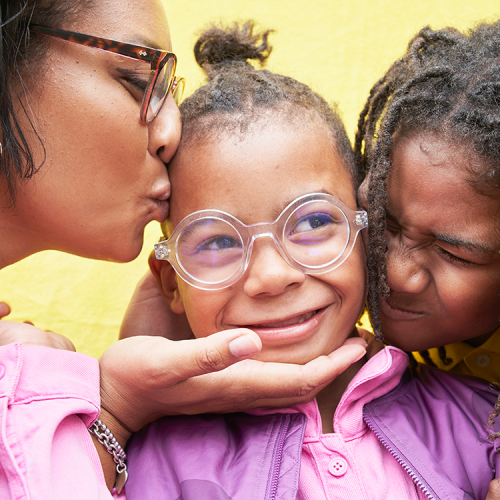Eye problems can have a detrimental impact on a child’s vision. Fortunately, a routine vision exam can detect many common eye conditions. Detecting and treating these conditions early on is critical to avoid permanent damage to children’s vision and overall development.
Common Eye Problems and Symptoms
Amblyopia, also known as “lazy eye,” can happen when one eye is not receiving as clear a picture as the other. This condition is best when treated as early as possible. If left untreated, it can lead to poor vision.
Strabismus is a misalignment of the eyes. While one eye is straight, the other may point in, out, up, or down. This condition may be present at birth or appear later on. Vision can often be restored when diagnosed and treated at an early age.
Conjunctivitis is one of the most common eye infections, especially in children. It is also known as “pink eye” because it can cause the white of the eye to become pink or red. It occurs when there is an irritation or inflammation of the conjunctiva. Conjunctivitis is typically a minor infection that may affect one or both eyes. It is highly contagious and can sometimes develop into a more severe condition.
A chalazion is a blockage that occurs when the meibomian gland becomes swollen and inflamed. The blockage may affect one or both eyes’ upper and lower eyelids. It can cause the gland to swell into a cyst leading to redness around the eyelid. A pediatrician can provide a diagnosis and suggest initial treatment. You may need to consult an eye specialist if the condition persists.
Refractive errors include myopia (nearsightedness), hyperopia (farsightedness), and astigmatism. A refractive error means that the shape of the eye does not refract or bend light correctly, making images appear blurred. If not corrected, these errors can have consequences that harm children’s vision.
Color blindness is typically more common in boys. The symptoms may also be challenging to detect. Parents may only notice a problem when a child is learning their colors, and they have difficulty determining the difference between specific colors or shades of the same color.
Other Signs To Look For
The following are common signs a child may have a vision problem:
- Extreme sensitivity to light
- Constant eye rubbing
- Poor focusing
- Poor visual tracking (following an object)
- Chronic tearing of the eyes
- Chronic redness of the eyes
- One or both pupils have an unusual or white appearance
- Abnormal alignment or movement of the eyes
- Difficulty reading
- Squinting
- Unable to see objects at a distance
If you suspect your child is experiencing any of these symptoms, consult your child’s healthcare provider for a diagnosis. Early detection and treatment are critical to correcting eye problems and lifelong visual impairments.
